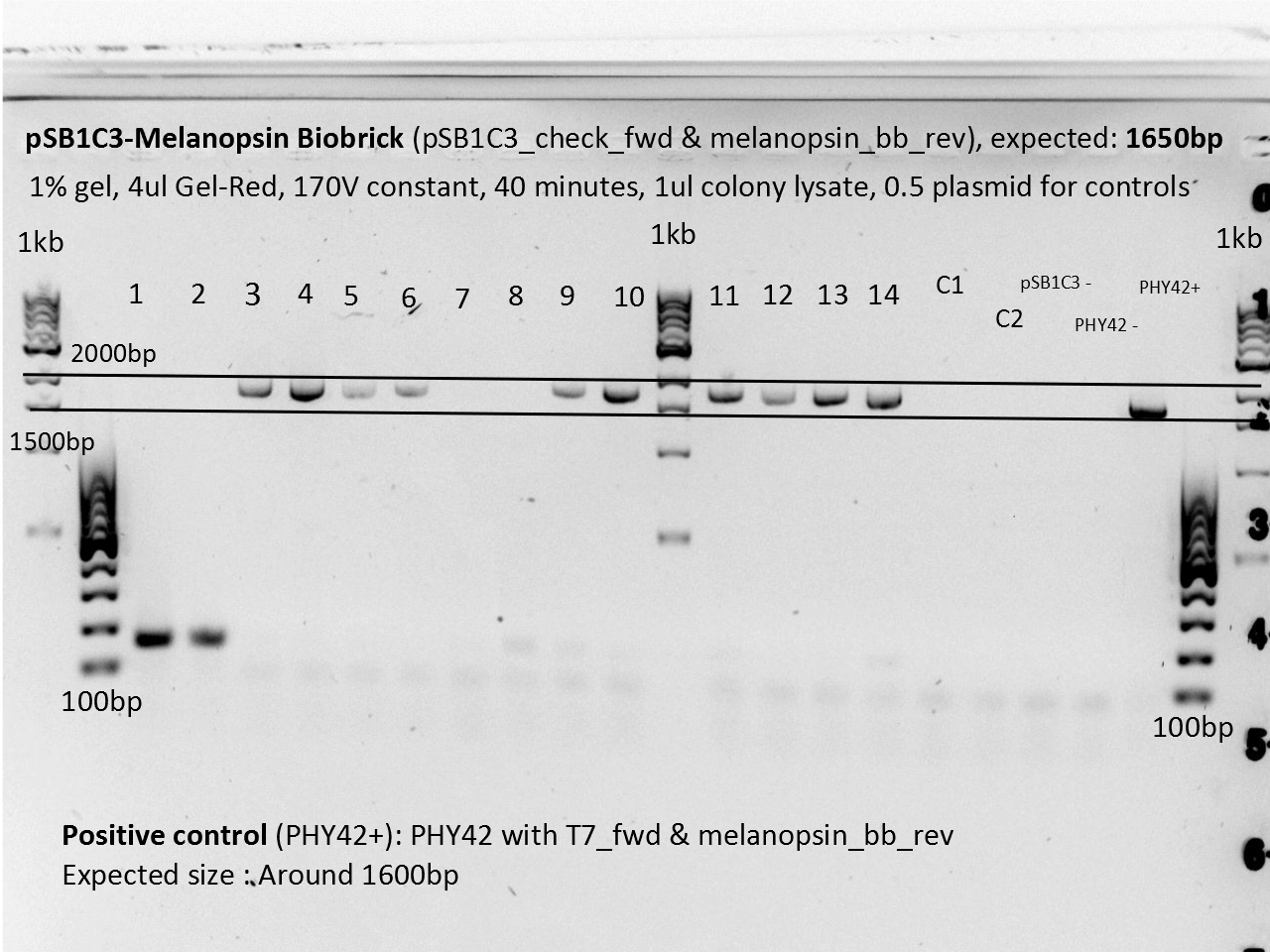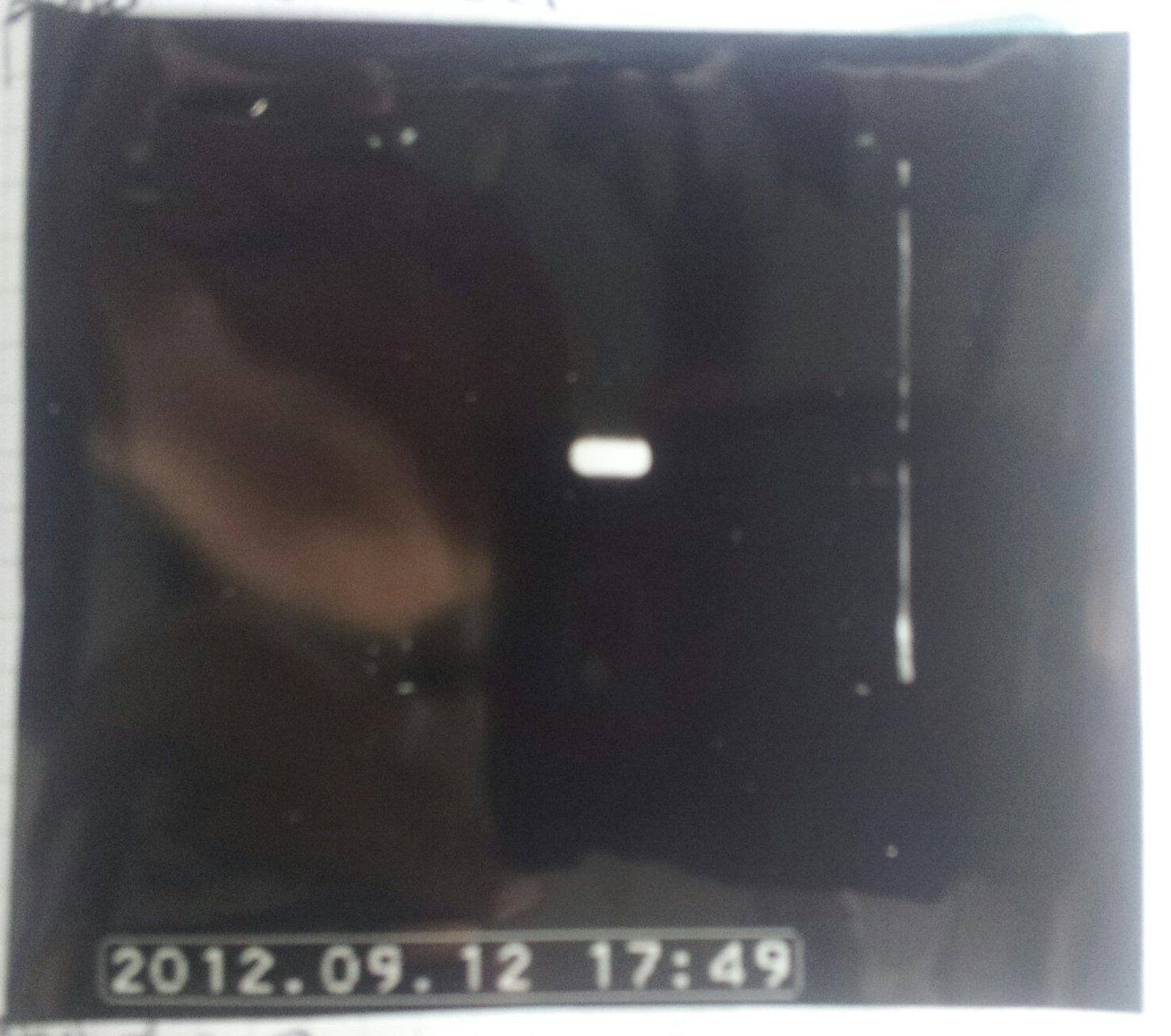Contents[hide] |
Western blot, day 1
Protocol: None
Forgot to insert protocol.
- Comments
Insert comments about what happened.
Melanopsin Biobrick colony PCR
Protocol: PCR
PCR is a reaction that makes it possible (and relatively easy) to amplify
a certain region of DNA. The first step is the selection of that region
(and the design of the relevant primers). Primer design can be done by hand, or by
using our Primer Design Helper. Once
done, order the primers (in our case, we ordered from them [http://www.idtdna.com/ IDT]).
When you've received the primers, prepare them and make sure you've got your PCR kit (we used the "Phusion® High-Fidelity DNA Polymerase"). Start preparing your master mix, the composition for one tube is:
1X Mastermix 20μl reaction, add in this order
| Reagent | Volume [μl] |
|---|---|
| Water | Complete to total volume of 20μl |
| HF-Buffer (5x) | 4 |
| DMSO (optional) | 0.6 |
| dNTPs | 0.4 |
| Forward primer (50μM) | 0.2 |
| Reverse primer (50μM) | 0.2 |
| Template (10ng/μl) | 0.5 |
| Phusion HF polymerase | 0.2 |
Prepare one or two extra tubes-worth of reagent (you'll use some liquid on the walls of your tips).
Once you've finished, you should run the resulting products on a gel to check if everything went as planned.
Tips
- Thaw the HF-Buffer, DMSO and dNTPs before making the mastermix.
- Avoid taking the Phusion-HF polymerase out of the freezer (only take it out briefly when you need to add it).
- If the reactions have different primers and/or template, add the polymerase right after the dNTPs, split the mastermix and add the rest.
- Don't forget positive and negative controls
- Primers should have similar Tms (less than 5°C).
- Primer Tm calculation is a less exact science than it should be (just test several tools and compare their results). If you're not sure what the correct Tm is, consider using a gradient PCR.
- Avoid primers with strong secondary structures.
- PCR can introduce mutations. Don't forget to sequence your final product (this could be your final plasmid): you really don't want to lose a few weeks because of a "corrupt" plasmid.
Colony PCR was performed on the lysed colonies from the day before, 14 from the pSB1C3-Melanopsin plate and 2 from the control plate.
Positive control: PHY42+: PHY42 with T7_fwd & melanopsin_bb_rev Expected size : Around 1600bp
Negative controls: pBS1C3 - = pSB1C3 with pSB1C3_check_fwd & melanopsin_bb_rev PHY42- = PHY42 (melanopsin) with pSB1C3_check_fwd & melanopsin_bb_rev
PCR with HF-Buffer (5x) and DMSO at 63°C with 1ul colony lysate as template.
Results:
LovTAP Readout Maxiprep
Team:EPF-Lausanne/Protocol/Maxiprep
- Comments
Insert comments about what happened.
NFAT gel extraction
Protocol: None
Forgot to insert protocol.
- Comments
Insert comments about what happened.
PCR products from three NFAT pcr reaction were digested w/ ecoRI and speI for ligation and then the cleanup was done on a gel due to competeing pcr reaction being present. This allowed for a cleaner product for our ligation fragment.
 "
"

